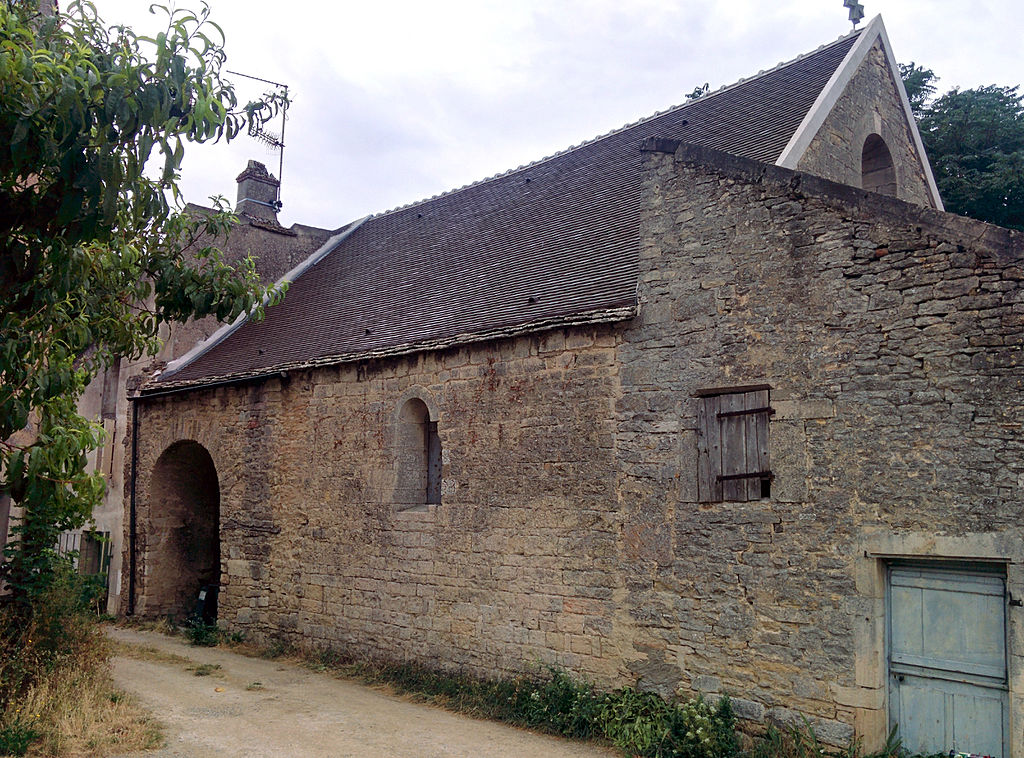Jacques de Molay was born somewhere between 1244 and 1249, most probably in Molay in the present day Haute-Saône Department of France. What were his early years like?
At the time Molay was in the diocese of Besançon in the County of Burgundy, not to be mistaken with the Duchy of Burgundy. The first, to the east of the other, was part of the Holy Roman (German) Empire. The latter, more to the west, of the Kingdom of France. So De Molay was not a subject of the king of France but of the German Emperor Frederick II.
De Molay was a small child at the time of Louis IX's first crusade. This crusade was prepared from 1245 to 1248 and accomplished between 1248 and 1250, after which Louis stayed in the Holy Land until 1254. After his departure Louis left behind a contingent of a hunderd knights, with squires, servants and grooms all equally capable of fighting, which he funded entirely himself. This 'French Regiment' was initially stationed at Jaffa. The Regiment remained operational until the fall of Acre in 1291. The stories about this not very fruitful crusade, in which also participated knights from the imperial Burgundy, and its sequel must have left its mark on the infant Jacques.
De Molay entered the Temple in 1265 in the chapel of the Templar house at Beaune in the Duchy of Burgundy and the Diocese of Autun. He was received by two dignitaries of the highest lever: Humbert de Peiraud, member of the noble family of Forez, Visitor General of the Order in France and England, and Amaury de la Roche, member of a branch of the Namur family, Master of the province of France, earlier Grand Commander of the Order in the Holy Land. So both from fine noble families, which suggests that De Molay himself may have come from a notable Burgundian nobel lineage, of middle nobility instead of landed gentry. The house itself does not appear to have been very important judged by the fact that Jacques de Molay was the only person known to have been received there.According to the trial reports the account of his reception, given by De Molay's first interrogation on October 24, 1307, goes as follows:
Forty-two years earlier, he was received at Beaune, in the diocese of Autun, by Brother Humbert de Pairaud, knight, in tlle presence of Amaury de la Roche and several other brothers, whose names he cannot remember. He also states under oath that after he had made several promises relating to the observances and statutes of the Order, they placed the cloak around his shoulders. And the one receiving him had brought into his presence a bronze crucifix bearing the image of Christ and told and ordered him to deny the Christ portrayed there. And he did so, though against his will; and then the one receiving him ordered him to spit upon it, but he spat on the ground. Questioned as to how many times he did so, he said on oath that he spat only once; and he remembers that well. Questioned about whether, on making his vow of chastity, he was told to have carnal union with his brothers, he denied it on oath, and declared that he had never done so.
We know nothing of what motivated De Molay, all possibilities, such as being a younger son so destined for the church, being pure speculation. Perhaps is was, as has been documented in other crusader cases, a mixed choise of sincere faith, material reasons and a taste for adventure. Or it was inspired by family pressure or feudal connections. In the former case sons were seen to follow in the footsteps of their crusading forfathers. And vasals were seen to follow their lord on crusade.
De Molay probably arrived in the Holy Land around 1270. At the time the Kingdom of Jerusalem was under constant attack from the Egyptian Mamluks who did not appreciate the neutrality of the Franks towards the Mongol invaders coming from the north and east, their main enemies.
Main source Alain Demurger (2009), The last Templar - the tragedy of Jacques de Molay; illustrations: top Ordination of Jacques de Molay in 1265 as a Knight Templar, at the Beaune commandery. Painting by Marius Granet (1777–1849); bottom:
Chapel of the Beaune commandery, where Jacques de Molay was ordained; both source Wikipedia.


No comments:
Post a Comment